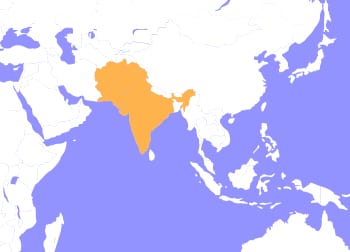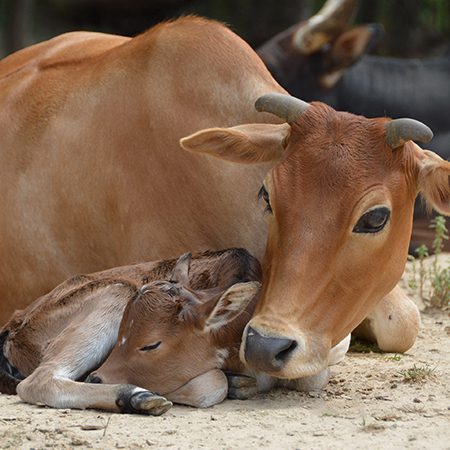Zebu
Bos primigenius indicus
Zebu is a species of domestic cattle originating in South Asia. Zebu are often characterized by a fatty hump that sits in between their shoulders. They have become well adapted to withstand high temperatures, which has gained them popularity as farming animals in tropical countries. They are often used as draught (working) animals, riding animals, dairy cattle, and beef cattle. Zebu are thought to be derived from another cattle breed, the Indian aurochs, which is considered the wild ancestor of the Zebu.
There are some 75 breeds of zebu that are known, they are split between African and Indian breeds. Over hundreds of years, zebus were imported to Africa. In the early 20th century they were first brought to South America, being imported into Brazil. They were brought to breed with Charolais cattle of the region. Zebu reach sexual maturity to reproduce around 4 years old. The gestation (development) period usually lasts 285 days, but can vary depending on the age and nutrition of the mother.

Zebus first became domesticated and originated in South Asia, ranging across India.
HABITAT -They can tolerate high heat and drought prone environments in South Asia.
DIET -They are herbivorous, eating grass, seeds, leaves, and flowers.
FUN FACT -Zebus hump & excess skin help them to thermoregulate in hot environments.
SOCIAL BEHAVIOR -They show social behaviors such as group cohesion living in groups.
ACTIVITY -They are diurnal being most active during the day and resting during the evening.
PREDATORS -Main predators of the Zebu are wild cats, bears, and humans.
SIZE -They can weigh between 300 and 450 pounds and reach 3 to 4 feet in length.
RELATIVES -Zebu are thought to descend from three Indian cattle the Guzerat, Nelore, and Gir.
CONSERVATION -Zebu are categorized as NE (Not Evaluated) species by the IUCN.
Cub Creek Animal Care Information
Housing - Our zebu herd thrives in an open pasture environment, with lush green fields for grazing. The pastures are enclosed with fencing to keep predators out, and provide a covered area to take shelter in extreme weather. We provide automatic water dispensers that always keep fresh water for them.
Diet - The majority of our zebus diets consist of grass, range cubes, allstock, calf manna, and hay. This provides well balanced nutrition. The food is provided to them in hanging food bucket containers, a feed trough, and hay feeders. Sometimes they enjoy special treats of various fruits and vegetables!
Enrichment - We love our zebus and provide them with plenty of enrichment. Scatter feeding is a technique we use to help make mealtimes last longer, and allows them to eat slower. Since the food is more spread out rather than in one large pile, they must do a bit more foraging. We also give them livestock balls to play with, and like to let them roam and explore outside of their regular grazing areas.


